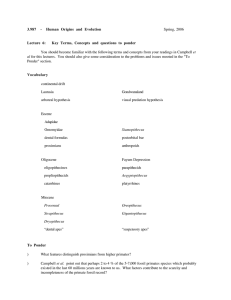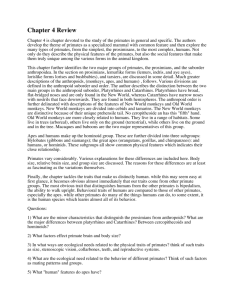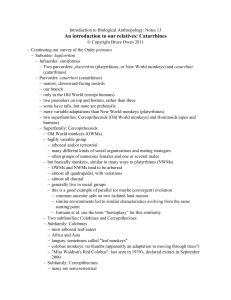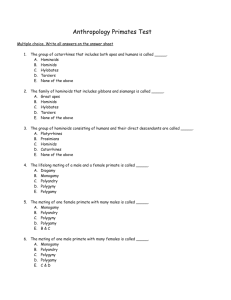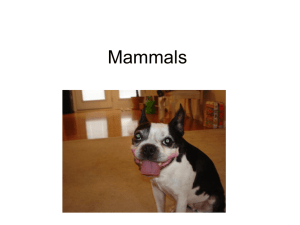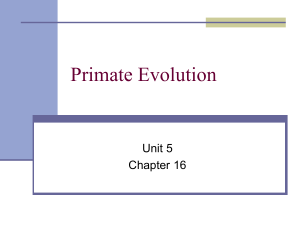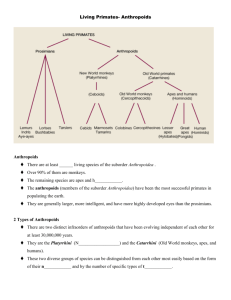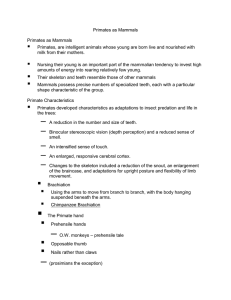The_Anthropoids
advertisement
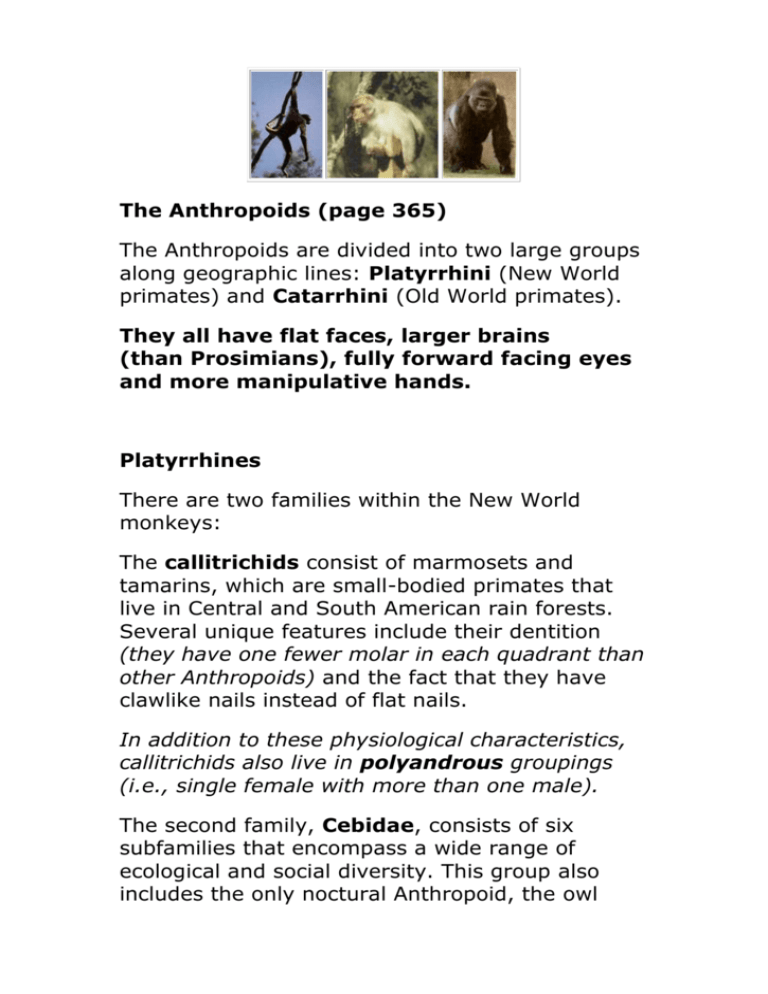
The Anthropoids (page 365) The Anthropoids are divided into two large groups along geographic lines: Platyrrhini (New World primates) and Catarrhini (Old World primates). They all have flat faces, larger brains (than Prosimians), fully forward facing eyes and more manipulative hands. Platyrrhines There are two families within the New World monkeys: The callitrichids consist of marmosets and tamarins, which are small-bodied primates that live in Central and South American rain forests. Several unique features include their dentition (they have one fewer molar in each quadrant than other Anthropoids) and the fact that they have clawlike nails instead of flat nails. In addition to these physiological characteristics, callitrichids also live in polyandrous groupings (i.e., single female with more than one male). The second family, Cebidae, consists of six subfamilies that encompass a wide range of ecological and social diversity. This group also includes the only noctural Anthropoid, the owl monkey or night monkey; additionally, several species of cebids also possess prehensile tails. The cebids are all primarily arboreal, and exhibit a number of different social systems. Catarrhines (old world) The catarrhine primates are generally larger than platyrrhines; additionally, aspects of the physiology (e.g., catarrhines have only two premolars in each quadrant vs. three for platyrrhines) and ecology (e.g., catarrhines are found in many terrestrial habitats) differ between these groups. Catarrhines can be divided into two superfamilies, the Cercopithecoidea (Old World monkeys) and the Hominoidea (apes). The cercopithecoids have two general groups, which can be divided along ecological and dietary lines: the Colobine monkeys are distinguished by their specialized stomachs, which have been modified for a highly folivorous, or leaf-eating, diet. Additionally, Colobines tend to live in single-male, multifemale social groupings. Cercopithecines, the other group within the Cercopithecoidea, are composed of a cohort of monkeys that exhibit a wide range of dietary, ecological, and social preferences. There are many terrestrial species, and their geographic distribution includes Africa as well as Asia (and in one case, Gibraltar as well). The apes represent a tailless group of large-bodied primates. The classification Hominoidea includes both lesser (e.g., gibbon, siamang) and great apes (orangutan, gorilla, chimp, human). The apes are generally allocated into one of three families: 1. Hylobatidae includes the lesser apes. 2. Pongidae includes the great apes, minus humans. 3. Hominidae includes humans and their fossil relatives.
